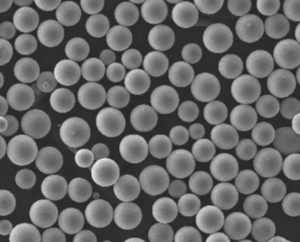Exploring the Advantages and Applications of 316L Powder in Additive Manufacturing
Additive Manufacturing, also known as 3D printing, has revolutionized the manufacturing industry. This innovative technology allows for the creation of complex and intricate designs with ease. One of the key materials used in additive manufacturing is 316L powder, which offers a wide range of advantages and applications. In this article, we will delve into the benefits of 316L powder and explore its various uses in the field of additive manufacturing.
What is 316L Powder?
316L powder is a type of stainless steel powder that is commonly used in additive manufacturing processes. It is a low-carbon version of the 316 stainless steel, which contains molybdenum, nickel, and chromium. The “L” in 316L stands for “low carbon,” indicating its reduced carbon content. This makes 316L powder highly resistant to corrosion and oxidation, making it an ideal material for a wide range of applications.
Advantages of 316L Powder
1. Corrosion Resistance
One of the major advantages of 316L powder is its exceptional corrosion resistance. This makes it suitable for applications in environments where exposure to harsh chemicals or extreme conditions is expected. Whether it is used in marine environments, chemical processing plants, or medical devices, 316L powder offers excellent resistance to corrosion, ensuring longevity and durability.
2. High Strength and Durability
Another notable advantage of 316L powder is its high strength and durability. The material exhibits excellent mechanical properties, including good tensile strength and hardness. This makes it suitable for producing functional and load-bearing parts. From aerospace components to automotive parts, 316L powder provides the necessary strength and durability required for demanding applications.
3. Biocompatibility
316L powder is widely used in the medical field due to its biocompatibility. This means that it is compatible with human tissues and can be safely used in medical implants and surgical instruments. The low carbon content of 316L powder reduces the risk of sensitization and allergic reactions, making it an excellent choice for applications in healthcare and biomedical engineering.
4. Design Flexibility
Additive manufacturing offers unparalleled design freedom, and 316L powder takes full advantage of this capability. With 316L powder, complex geometries and intricate designs can be realized with ease. This allows for the production of customized and personalized components that meet specific requirements. Whether it is creating lightweight structures or optimizing internal channels, the design flexibility offered by 316L powder opens up new possibilities in additive manufacturing.
Applications of 316L Powder in Additive Manufacturing
1. Aerospace Industry
The aerospace industry demands materials that can withstand extreme conditions while maintaining structural integrity. 316L powder is widely used in additive manufacturing for producing components such as turbine blades, fuel nozzles, and heat exchangers. Its excellent strength, corrosion resistance, and high-temperature properties make it a reliable choice for aerospace applications.
2. Medical and Dental Applications
The medical and dental fields benefit greatly from the use of 316L powder in additive manufacturing. The biocompatibility and corrosion resistance of 316L powder make it suitable for manufacturing surgical instruments, orthopedic implants, and dental prosthetics. Additive manufacturing enables the production of patient-specific implants that offer improved functionality and comfort.
3. Chemical Processing Industry
Chemical processing plants often deal with aggressive chemicals and high temperatures. 316L powder’s corrosion resistance and durability make it an ideal choice for manufacturing components such as reactors, heat exchangers, and valves. Additive manufacturing with 316L powder enables the creation of complex internal geometries that enhance performance and efficiency.
4. Jewelry Design
The jewelry industry has embraced additive manufacturing as a means to create intricate and unique designs. 316L powder offers the advantage of high detail resolution, allowing jewelry designers to bring their intricate designs to life. The material’s corrosion resistance ensures that the jewelry pieces maintain their beauty and quality over time.
Conclusion
316L powder has emerged as a versatile and valuable material in the field of additive manufacturing. Its exceptional corrosion resistance, high strength, biocompatibility, and design flexibility make it an ideal choice for various industries. From aerospace components to medical implants and jewelry design, the applications of 316L powder are vast and promising. As additive manufacturing continues to advance, 316L powder is poised to play a significant role in shaping the future of manufacturing.
FAQs (Frequently Asked Questions)
Q1: Can 316L powder be used for outdoor applications?
A1: Yes, 316L powder’s corrosion resistance makes it suitable for outdoor applications where exposure to moisture and harsh weather conditions is expected.
Q2: Is 316L powder compatible with other additive manufacturing techniques?
A2: Yes, 316L powder can be used with various additive manufacturing techniques such as selective laser melting (SLM) and electron beam melting (EBM).
Q3: Are there any post-processing requirements for components made with 316L powder?
A3: Depending on the specific requirements, components made with 316L powder may require post-processing steps such as heat treatment or surface finishing to achieve the desired properties and aesthetics.
Q4: What are the limitations of using 316L powder in additive manufacturing?
A4: While 316L powder offers numerous advantages, it does have certain limitations, including higher cost compared to traditional manufacturing methods and limitations in part size due to the build volume of additive manufacturing machines.
Q5: Can 316L powder be recycled?
A5: Yes, 316L powder can be recycled and reused, making it a more sustainable choice compared to traditional subtractive manufacturing processes.
Remember, 316L powder’s unique properties and applications make it a valuable material in the field of additive manufacturing. Whether it’s creating functional prototypes or producing end-use parts, 316L powder offers the advantages of corrosion resistance, high strength, biocompatibility, and design flexibility. As additive manufacturing continues to evolve, the utilization of 316L powder is expected to grow, leading to exciting advancements in various industries.

